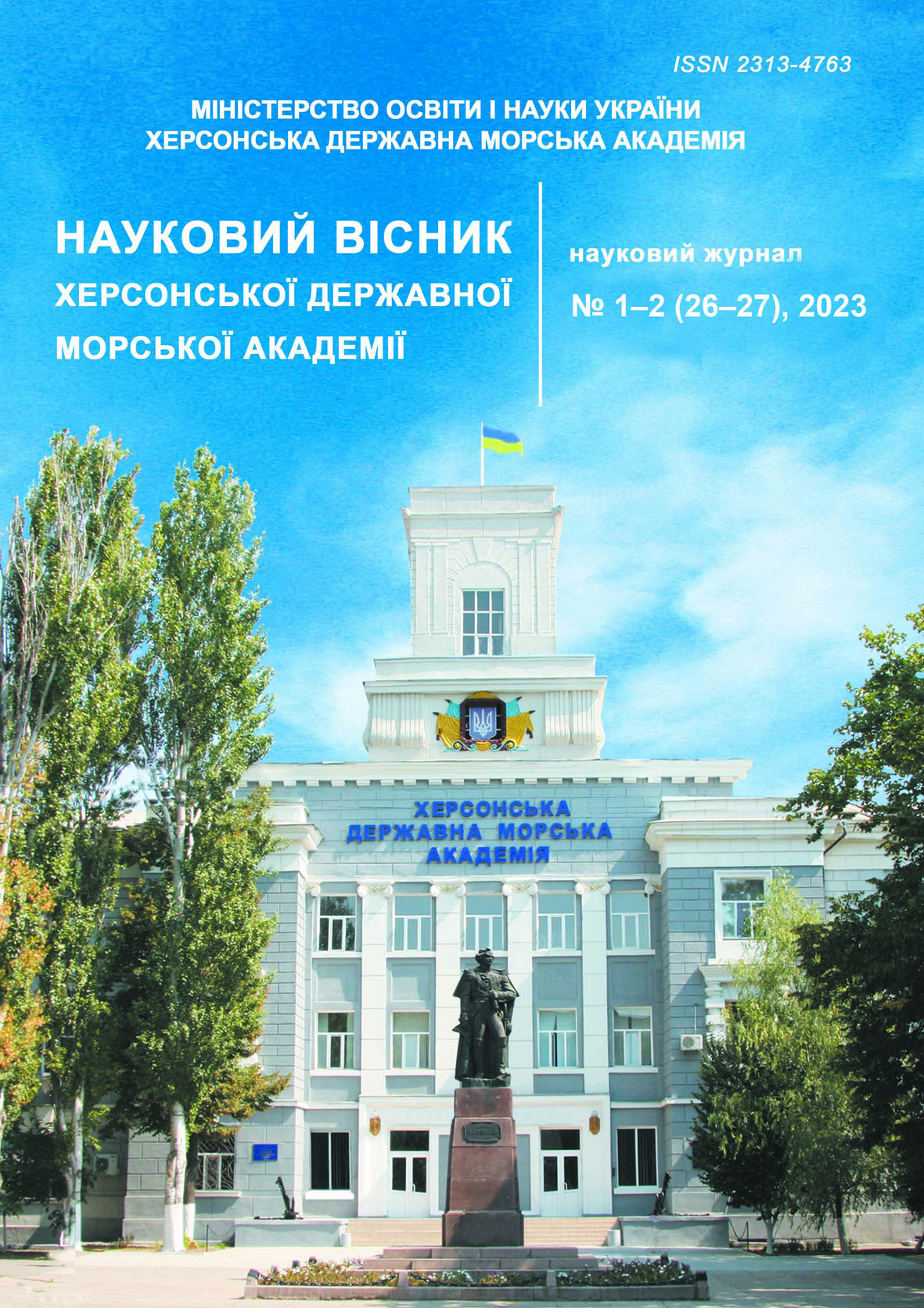EXPEDIENCY OF USING GaAs COMPOUNDS IN ORIENTATION MODULES OF ORBITAL METEOROLOGICAL SATELLITE
https://doi.org/10.33815/2313-4763.2023.1-2.26-27.096-106
Abstract
A lot of time has passed since the beginning of satellite meteorological studies of weather phenomena on the Earth's surface. The recording systems, data transfer rates, image quality of cyclones, etc. have changed. However, the main problem has not been solved yet: “how to cool the videocon on the shadow side of the Earth, when light quanta directly fall into the focus of the lens.
The topic of this work is the study of the comparative characteristics method of the possibility of using one- and two-coordinate photodetectors based on GaAs compounds (as opposed to CdSe and CdS) in the orientation modules of artificial weather satellites of the Earth in order to prevent the failure of the photo recorder.
The volt-ampere characteristics (VAH) of PCFs were experimentally investigated: n-CdS; n-CdSe; n-GaAs. At the same time, the IR laser diode emitted at a wavelength of 780 nm. The pump current of the laser is equal to 100 mA, the diameter of the beam on the surface of the PCF was 1 mm. The length of the light-sensitive region of the photoreceptor was L = 14.0 mm. The dark current was 2A and the ratio of photocurrent to dark current Iph/Id ∼ 1000. The power supply of the PFC was carried out from a highly stable power supply unit. Measurements were made with a B7-40A voltmeter. The measurement error was 0.5%. The supply voltage between the electrodes of the PCB was U12 = 24V. The VAH of the PFC was obtained by applying voltage between the contacts and measuring the current flowing through two counter-series p-n junctions. When the photosensitive area is illuminated, the power factor of the PFC remains practically unchanged, that is, the photocurrent in the structure does not depend on the coordinate of the light spot. But the n-GaAs system has the best performance.
It was established that the characteristics of the coordinate sensitivity of the PCF - n-GaAs correlate with the experimental dependences on the shape of the curves and the position of the maxima. The specific spectral sensitivity of the n-GaAs photodetector was determined. Under equal excitation conditions, it is 12 times higher than the sensitivity of PCFs made on the basis of n-CdS, and 10 times higher than the sensitivity of PCFs made on the basis of n-CdSe, which indicates the indisputable promise of PCF based on gallium arsenide layers. The promising nature of n-GaAs layers is also evidenced by the high specific coordinate sensitivity as well as the operating temperature limit -200+4000С, which is important for identifying the possibilities of using n-GaAs PCFs in artificial space satellites of the Earth.
References
GOES-R Series website: (2022). https://www.goes-r.gov/users/GOES-17-ABI-Performance.
Chikovani, V. V. (2014). A fiber-optic gyroscope compared to a Coriolis vibration gyroscope. Military and technical collection, (10). Р.78–82.
Bogatyreva, V. V. (2010). Optical measurements in non-inertial frames of reference // Scientific and technical bulletin of SPbGUITMO. Vol. 65. No. 1.
Angelsky, O. V., Maksymyak, P. P., Zenkova, C. Y., Maksymyak, A. P., Hanson, S. G., Ivanskyi, D. D. (2019). “Peculiarities of control of erythrocytes moving in an evanescent field”, Journal of Biomedical Optics, 24 (5), 055002.
Nurdinova, R. A. Online scientific forum of young scientists, doctoral students and researchers. Research of position-sensitive sensors for determining the positions of objects, 2023. – P. 84–85. TATUFF-EPAI.
The method of processing the surface of a silicon single crystal Patent for the invention. (2004). 3412 Ukraine MPK7Н01L21/00 / G. I. Krapyvko; applicant and patent owner Kherson State Technical University. No. 2004021333; statement 24.02.04; published 15.11.04, Bul. No. 11.
Development of diode temperature sensors with operating range up to 750 (2018). K. Hennadiy Krapyvko Oleksii Demenskyi Vol 3, №5(93). – Р. 19–26 // Eastern-EuropeanJournal of EnterpriseTechnologies (SciVerseScopus).
Biryukov, E. (2007). Evolution of image sensors: from CCD to CMOS // Components and Technologies. No. 10 P. 56–59.
Measuring converters of optical diagnostic systems with multifunctional photodetectors / R. I. Vorobey, O. K. Gusev, A. I. Svistun, A. K. Tyavlovsky, K. L. Tyavlovsky, L. I. Shadurskaya // Instruments and measurement methods, 2018. No. 3. – P. 215–226.
Andrés Márquez, Francisco J. Martínez-Guardiola, Jorge Francés, Cristian Neipp, Manuel G. Ramírez, Eva M. Calzado, Marta Morales-Vidal, Sergi Gallego, Augusto Beléndez, Inmaculada Pascual, (2020). “Analytical modeling of blazed gratings on two -dimensional pixelated liquid crystal on silicon devices,” Optical engineering 59(4),041208, doi: 10.1117/1.OE.59.4.041208.
Methodological guidelines for independent work of students from the discipline "Micro- and nanotechnology components" for students of specialty 176 "Micro- and nanosystem technology". / Compiler: M. I. Palamar, M. O. Strembitskyi. – Ternopil: TNTU 2023 – 12 p.
Patent of the Russian Federation No. 2246779, IPC H01L31/09, "Coordinate-sensitive receiver of optical radiation" Rakhimov N. R., Seryoznov O. M., priority from 03.11.2003, published 20.02.2005.
Chugui, Yu. V., Verkhogliad, A. G., Potashnikov, A. K., Finogenov, L. V., Makarov, S. N. (2007). Optical-electronic measuring systems for scientific and industrial applications //OMIP. Р. 26–38.
Nurdinova, R. A., Alimzhonova, A. Sh. New aspects of the use of elements with anomalous photovoltaic voltages, Scientific and technical journal "Physics of semiconductors and microelectronics", ISSN: 2181-9947, DOI 10.37681/2181-9947-2019-4, P.49–55.
Photonics Rules of Thumb, Third Edition Author(s): John Lester Miller; (2020). Edward J. Friedman; John N. Sanders-Reed; Katie Schwertz; Brian K. McComas SPIE PRESS BOOK P. 740.
Chukita, V. I., Senokosov, E. A., Feshchenko, V. S. (2019). The stand for research of positional-sensitive photosensor// Technological Journal; 7(3) Р.69–76. DOI: 10.32362/2500-316X-2019-7-3-69-76.
The use of quantum dots based on CdSe (2018). / CdS / ZnS in coplanar capacitive structures for optical sensors gas environments S. A. Pavlov, A. S. Pavlov, E. Yu. Maksimova, A. V. Alekseenko, A. V. Pavlov, and E. M. Antipov //Applied physics, No.3. Р. 27–33.






